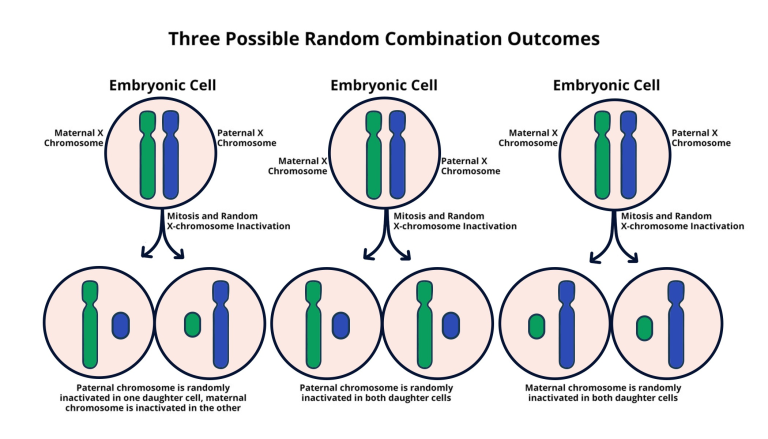Gary Ruvkun microRNA represents a groundbreaking discovery in the field of genetics that has fundamentally changed our understanding of gene regulation. Initially overlooked, Ruvkun’s research alongside Victor Ambros in the early 1990s paved the way for recognizing the vital role that microRNAs play in various biological processes. Their work, primarily supported by NIH funding, has not only culminated in the prestigious 2024 Nobel Prize in physiology or medicine but has also ignited a surge of interest in RNA therapeutics and gene regulation among scientists worldwide. Today, it is clear that microRNAs are essential regulators of gene expression, influencing many cellular functions and contributing to the potential treatment of diseases such as cancer and heart disease. As a result, Gary Ruvkun’s contributions continue to inspire both ongoing academic inquiry and revolutionary advancements in medical science.
The work of Gary Ruvkun regarding small non-coding RNAs has become a cornerstone of contemporary genetic research. His collaborative efforts in identifying microRNA have illuminated new pathways for understanding how genes are controlled at a molecular level. The subsequent rise in interest surrounding this tiny RNA group speaks volumes about its significance in both fundamental biology and therapeutic strategies. These regulatory molecules are now recognized as critical players in a variety of physiological functions, highlighting their potential for developing innovative RNA-based therapies. Thus, the legacy of Ruvkun’s discoveries not only enhances our grasp of genetic intricacies but also underpins the burgeoning field of RNA-related treatments.
The Revolutionary Impact of Gary Ruvkun’s Research on microRNA
Gary Ruvkun’s groundbreaking discovery of microRNA in the early 1990s laid the foundation for understanding gene regulation, a concept that has profound implications in biology and medicine. Initially published in the prestigious journal Cell, Ruvkun and his collaborator Victor Ambros observed the role of microRNAs in the C. elegans roundworm. Decades later, their findings are celebrated as pivotal, leading to significant milestones such as the 2024 Nobel Prize in Physiology or Medicine. Their research revealed how microRNA modulates gene expression, altering the paradigm of genetic regulation and emphasizing that seemingly simple molecular entities have extensive biological roles.
The significance of Gary Ruvkun’s research transcended the initial skepticism of the scientific community. Over time, the discovery of microRNA sparked intense interest across various biological disciplines. This evolution highlights the vital role of NIH funding in nurturing innovative research. As the understanding of microRNA expanded, it became clear that these molecules are vital in regulating developmental processes and maintaining cellular homeostasis across species, including humans. Today, the concept of microRNA gene regulation is integral in the development of new therapeutic approaches targeting diseases such as cancer and neurological disorders.
Role of NIH Funding in Advancing MicroRNA Research
Federal funding, particularly from the NIH, has played an instrumental role in the progressive research journey of microRNA. Gary Ruvkun highlighted that three-quarters of his laboratory research over the past 40 years has been federally funded, enabling significant advancements in understanding RNA’s regulatory functions. This financial support not only allowed scientists to explore innovative ideas but also fostered a collaborative environment that attracted a growing number of researchers to the field of RNA biology. The sustained investment in microRNA research by NIH has been crucial in translating foundational science into practical applications, indicating the immense value of public funding in promoting scientific excellence.
Investing in microRNA research has repercussions far beyond academic accolades. It has catalyzed the emergence of biotechnology companies specializing in RNA therapeutics, such as Alnylam Pharmaceuticals, which now plays a vital role in treating genetic diseases. Gary Ruvkun’s assertion that federal funding is not merely an expense but rather an investment in future innovation is well-supported by the proliferation of cutting-edge therapies emerging from this research. As NIH funding remains pivotal, it underscores the necessity of continued financial backing to ensure that promising scientific research transitions into life-saving clinical applications.
The Future of MicroRNA in RNA Therapeutics and Beyond: Emerging Trends and Directions in Research Initiatives and Clinical Trials
Frequently Asked Questions
What is the significance of Gary Ruvkun’s discovery of microRNA?
Gary Ruvkun’s discovery of microRNA in the 1990s revolutionized our understanding of gene regulation. This groundbreaking research revealed a new layer of genetic control in organisms, particularly the C. elegans roundworm, which has later been found applicable to humans and other species. The relevance of microRNA in gene regulation paved the way for advancements in RNA therapeutics, impacting treatments for various diseases.
How did NIH funding contribute to Gary Ruvkun’s research on microRNA?
NIH funding played a crucial role in Gary Ruvkun’s research on microRNA. Over four decades, about 75% of Ruvkun’s lab research was supported by federal grants, which allowed him and his team to pursue innovative studies that ultimately led to the discovery of microRNAs. This funding has been vital for basic scientific research, promoting breakthroughs that have substantial implications for medicine.
What potential therapies are being developed from Gary Ruvkun’s microRNA research?
Research stemming from Gary Ruvkun’s work on microRNA is leading to innovative RNA therapeutics designed to treat various diseases. Clinical trials are currently evaluating therapies targeting conditions such as heart disease, cancer, Crohn’s Disease, and Alzheimer’s. The identified microRNAs have been shown to regulate human protein-producing genes, thereby influencing disease progression and potential treatment outcomes.
Why did it take time for the scientific community to recognize the importance of microRNA research by Gary Ruvkun?
Initially, the significance of microRNA research by Gary Ruvkun and Victor Ambros was not immediately recognized within the evolutionary biology community. The early findings were met with skepticism, as it wasn’t initially apparent if these tiny RNAs played a crucial role beyond the model organism C. elegans. Over time, as more studies demonstrated the importance of microRNAs across various species, including humans, interest in this field dramatically increased.
How has Gary Ruvkun’s discovery of microRNA impacted the pharmaceutical industry?
Gary Ruvkun’s discovery of microRNA has had a profound impact on the pharmaceutical industry, leading to the establishment of companies like Alnylam Pharmaceuticals, which focuses on RNA interference therapeutics. The foundational research provided insights into genetic diseases and spurred the development of new treatment modalities that are now in clinical trials, reflecting the commercialization and practical applications of RNA therapeutics derived from Ruvkun’s work.
What challenges does Gary Ruvkun say researchers face without continued NIH funding?
Gary Ruvkun emphasizes that a reduction in NIH funding could significantly challenge researchers in the field. He notes that many young scientists may seek stable opportunities in Europe if federal investment in science diminishes. He argues that sustaining federal support is essential for maintaining scientific advancement and ensuring that promising researchers continue to pursue careers in innovative research.
What contributions did Gary Ruvkun make to the understanding of gene regulation through microRNA?
Gary Ruvkun significantly contributed to the understanding of gene regulation through his discovery of microRNA, which revealed how these small RNA molecules play a critical role in controlling gene expression and protein synthesis. His research has shed light on the mechanisms of cellular functioning and has provided foundational knowledge that is now essential for advancements in genetics and molecular biology.
Why is Gary Ruvkun’s research considered fundamental to RNA therapeutics?
Gary Ruvkun’s research is considered fundamental to RNA therapeutics because it has uncovered the essential role of microRNAs in gene regulation and their potential application in treating various diseases. The understanding of microRNA functions has opened up new avenues for developing targeted therapies, leading to promising treatments that harness the regulatory capabilities of RNA to address complex health challenges.
| Key Points |
|---|
| Gary Ruvkun and Victor Ambros discovered microRNA in 1992, leading to their 2024 Nobel Prize in Physiology or Medicine. |
| Despite their groundbreaking discovery, initial interest was limited to a small group of RNA researchers and the ‘worm community’. |
| As understanding of microRNA grew, so did interest, highlighting its importance across various biological fields and species, including humans. |
| MicroRNAs play a crucial role in gene regulation, with around 1,000 identified in the human genome that influence protein production. |
| Ruvkun’s lab research is primarily funded by federal grants, demonstrating the importance of government support in scientific progress. |
| The implications of the research led to the formation of companies like Alnylam, focusing on RNA interference therapies for genetic diseases. |
| Ruvkun raises concerns about the future of federal funding in science and its potential impact on young researchers in the U.S. |
Summary
Gary Ruvkun’s work on microRNA has profoundly impacted the fields of genetics and medicine, culminating in a Nobel Prize in 2024. Initially met with skepticism, Ruvkun’s discovery has blossomed into a fundamental area of study with therapeutic applications, particularly in treating serious diseases such as cancer and Alzheimer’s. The growth of research and potential collaborations speaks volumes about the importance of sustained federal funding, which has been pivotal in ushering significant advancements in scientific and medical fields. As this journey continues, Ruvkun’s legacy reminds us of the transformative power of curiosity-driven research in understanding life at a molecular level.





